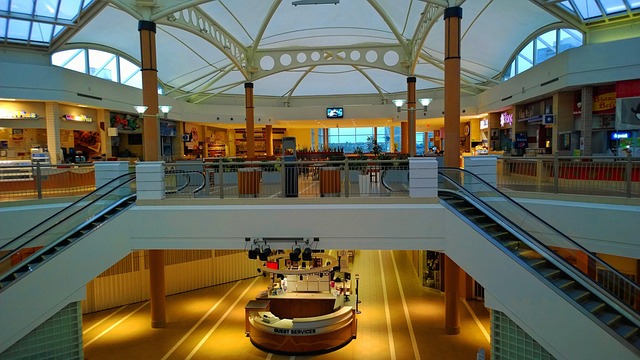Assessing the existing roof is vital for commercial re-roofing services. Damage like leaks and corrosion may require more than a top layer replacement. Commercial roofs face age-related issues and environmental exposure, leading to structural damage. Choosing the right roofing material, such as asphalt shingles or metal panels, is essential. Hiring reputable professionals ensures accurate assessments and safe installations. Cost estimates vary based on project specifics, but re-roofing offers extended lifespans, improved aesthetics, energy efficiency, and increased property value. Regular maintenance after installation secures long-term performance.
When it comes to commercial properties, the roof is a critical component that often goes overlooked until damage becomes evident. If you’re considering commercial re-roofing services, understanding the process and common issues is essential. This comprehensive guide explores everything from assessing your roof’s condition to choosing the right materials and maintaining your new system. Discover how an expert team can efficiently handle your project while providing cost estimates and highlighting the benefits of upgrading your commercial roof.
- Assessing Commercial Roof's Condition for Re-roofing
- Understanding Common Issues Requiring Commercial Re-roofing Services
- Types of Roofing Materials for Commercial Buildings
- Hiring a Reliable Team for Efficient Commercial Re-roofing
- Cost Estimation and Benefits of Upgrading Commercial Roofs
- Post-Re-roofing Maintenance Tips for Commercial Properties
Assessing Commercial Roof's Condition for Re-roofing

When considering commercial re-roofing services, assessing the condition of the existing roof is a crucial first step. Property managers and owners often turn to professionals for an expert evaluation, as it’s not always apparent from a visual inspection alone. They look for signs of damage, such as leaks, missing or damaged shingles or tiles, corrosion in metal structures, and weakened flashing around pipes or vents.
In many cases, commercial roofs require more than just a simple replacement of the top layer. A reroof flat roof might involve removing the old underlayment and installing a new one, especially if it’s been damaged by water intrusion. An overlay roof can be an option for those with a solid base but need to strengthen or modernize their existing system. This process involves adding a second roof layer to enhance durability and extend the life of the roof.
Understanding Common Issues Requiring Commercial Re-roofing Services

Commercial properties often face challenges with their roofing systems over time, leading to the need for professional commercial re-roofing services. Understanding common issues is essential for business owners to recognize when it’s time to invest in a new roof. One of the primary concerns is damage caused by age and environmental factors; old roofs may develop leaks, especially if they have not been maintained properly. These leaks can result in significant internal damage and even structural problems if left unaddressed.
Another common issue requiring commercial re-roofing is the presence of multiple roof layers or an overlay roof. Over time, these additional layers can become damaged, weak, or simply reach the end of their lifespan, making them ineffective at protecting the building below. In such cases, removing the old layers and installing a fresh, new roofing system is often the best solution to ensure long-term protection for the commercial property.
Types of Roofing Materials for Commercial Buildings

When it comes to commercial re-roofing services, choosing the right roofing material is a key decision that can impact both the structural integrity and aesthetic appeal of a building. For flat roofs, popular options include asphalt shingles, known for their affordability and ease of installation, or more durable materials like metal panels, which offer superior resistance to extreme weather conditions. These materials are often chosen due to their longevity and cost-effectiveness, making them ideal for commercial properties aiming to maintain low maintenance costs.
Additionally, many buildings opt for overlay roof systems, where a new layer is added over the existing roof, providing an efficient and cost-saving solution. This method is particularly useful for those looking to retain the original structure while enhancing insulation and energy efficiency. Another less common but innovative approach involves installing a second roof layer as part of a complete re-roofing project, adding an extra protective barrier against environmental factors.
Hiring a Reliable Team for Efficient Commercial Re-roofing

When it comes to commercial re-roofing, hiring a reliable team is paramount for efficient and effective results. Businesses often turn to professional roofing services when they need to replace or repair their existing roof systems. A reputable contractor offers more than just skilled labor; they bring expertise in handling various roofing types, including flat roofs that require meticulous care. These experts can assess the condition of your current roof, whether it’s a single-layer or an overlay system, and provide tailored solutions.
A reliable team for commercial re-roofing should be equipped to handle every step of the process, from removal of the old second roof layer to the installation of a new one. They must possess the necessary tools and adhere to safety standards, especially on high-rise buildings or complex structures. By hiring professionals, businesses can ensure their investment is protected and enjoy long-lasting protection for their premises, maintaining the overall value of their property.
Cost Estimation and Benefits of Upgrading Commercial Roofs

When considering commercial re-roofing services, one of the primary concerns for property owners is the cost estimation. Upgrading a commercial roof involves more than just replacing the top layer; it often entails removing the existing second roof layer or even reroing a flat roof to ensure structural integrity and longevity. The price can vary widely based on factors like the roof’s size, material choices, labor costs, and local regulations. However, investing in a robust roofing system offers numerous benefits.
Beyond extended lifespan and improved aesthetics, an upgraded commercial roof can significantly enhance energy efficiency, reduce maintenance costs, and even increase property value. Modern roofing systems are designed to withstand harsh weather conditions, providing superior protection for the building’s interior and its occupants. Additionally, many materials now come with eco-friendly properties, contributing to a more sustainable environment while meeting the functional requirements of commercial re-roofing services.
Post-Re-roofing Maintenance Tips for Commercial Properties

After completing a commercial re-roofing project, proper maintenance is crucial to ensure the new roofing system lasts as long as possible. One important tip is to establish a regular inspection schedule, ideally every six months, to identify and address any potential issues early on. This includes checking for loose or damaged shingles, flashing, and gutters, as well as examining the overall integrity of the roof.
Additionally, maintaining a safe environment around the property is essential during post-reroofing. Making sure the second roof layer is secure and intact prevents accidents and protects both the building and those nearby. For flat roofs, an overlay roof can be a smart solution to provide extra protection and extend the life of the new roofing system. Regular cleaning and maintenance will keep the roof in top condition, ensuring optimal performance for many years to come.
